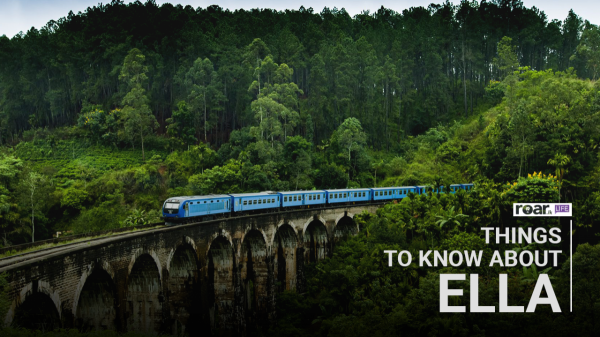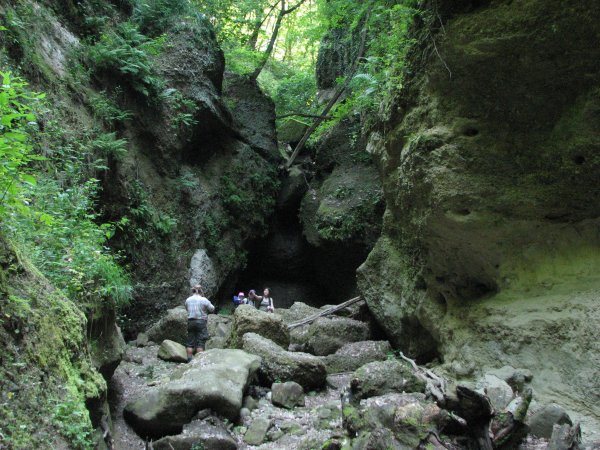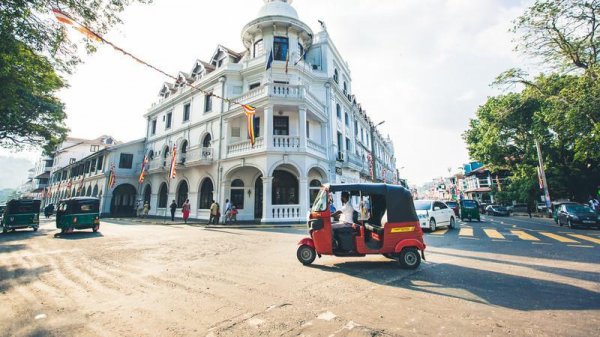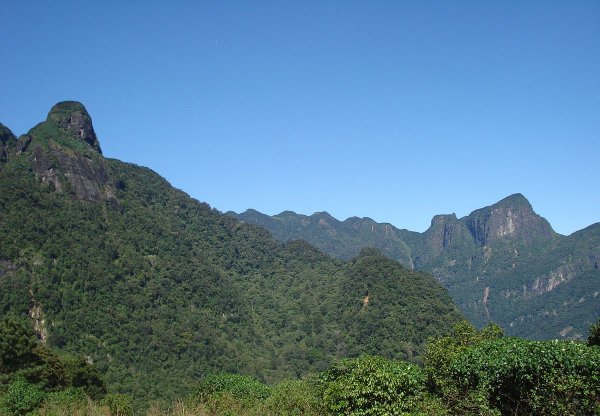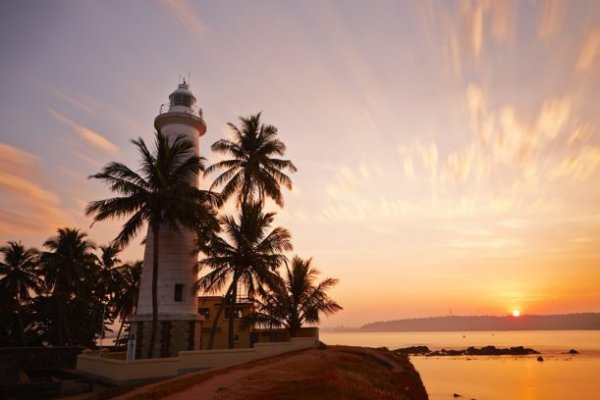
From the plains of Ussangoda, to the mountains of Ritigala and Adam’s Peak, many places in Sri Lanka have featured in folk legends and mythology. Rumassala kanda in the south of the country is one such place.
The hill, located in Unawatuna, is in close proximity to the Galle-Matara main road. It can be identified from afar by the small temple that sits on its peak, along with the lush green forest that thrives along the sides of the mountain.
The Jungle Beach

The scenic view from Rumassala is why the Portuguese named it buenos vista, which translates to ‘good view.’ Image courtesy tharanaya.lk
The journey to Rumassala provides visitors with glimpses of the Indian Ocean, and a walk through vegetation. The path leading to the base of the hill is narrow and rocky, and travelling by foot is the best way to get there.
Rumassala also offers visitors the pleasure of a sandy beach—a small bay area right next to the forest covered mountain, popularly known as the ‘Jungle Beach.’ This beach has become one of the most popular locations area, and while visiting this place one is bound to see a number of foreigners and locals enjoying a swim in the warm sea.
Past the beach, the mountain offers a trek through thick forest vegetation and at its peak a splendid view of the Galle harbour—which was why the Portuguese gave it the name buenos vista, which literally means good view.
The Legends Of Rumassala
According to the Ramayana, during the battle between Lord Rama and the King Ravana, the warrior god Hanuman was sent to the Himalayan region to bring back healing herbs to tend to the wounded Lakshmana, the brother of Lord Rama.
The tale goes on to say that Hanuman lifted and carried one of the Himalayan mountains back to the country, and dropped a large chunk of it on the Southern coast—this became Rumassala.
In his book titled Traditions of Sri Lanka, C. G. Uragoda mentions that the name Rumassala is a corruption of the Sanskrit word ramsala, which translates to ‘Rama’s hall.’ The writer also mentions that the name Unawatuna, too, draws from the Ramayana as it is a derivative of the Sinhalese phrase onna watuna.
Mythology And Medicinal Plants

The hill is home to approximately 150 species of herbal plants. Image courtesy ceylonlucktours.com
As C.G. Uragoda writes:
“Rumassala, like Ritigala, is an isolated hill and both share a similar legendary origin, that attempts to explain the similar characteristics of isolation and the presence of medicinal plants.”[1]
He also notes that among the vegetation of Rumassala, approximately 150 species of medicinal plant species have been identified—the same number of herbs which have been found at Ritigala. One such medicinal plant which can be found at Rumassala is the kalu nika herb, which according to folklore is said to have magical properties.
Rumassala: A Biodiverse Location
Aside from the vast number of medicinal plants, the area is rich in fauna as well. Over eighty species of birds and seventy five species of butterflies have been found, and the waters of the cove near the mountain are rich in marine life and coral.
There is a Nature Field Centre located on the hill, which was established in 2008 and was a collaboration between the the Central Environment Authority (CEA) and the John Keells Social Responsibility Foundation. The objective of the centre is to conserve the rich biodiversity of Rumassala.
Its Architecture
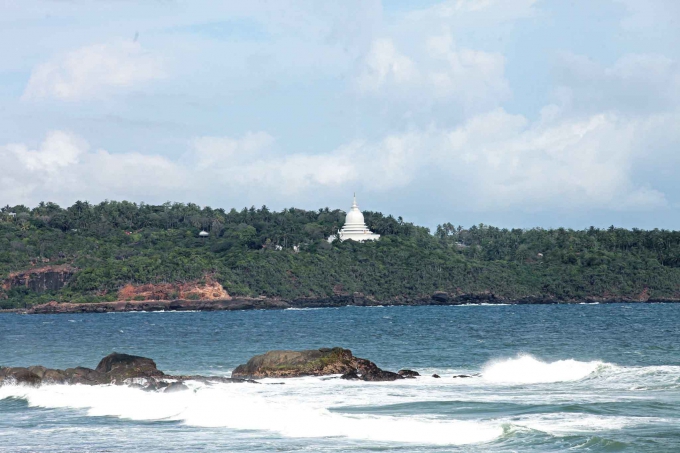
The Japanese peace pagoda located on the hill was built by an order of Buddhist nuns from Japan—the Nipponzan Myohoji Nikaya. Image courtesy timeout.com
There is even a 15-foot tall statue of Lord Hanuman located near the top of the mountain, at the entrance to the Japanese sama chaitya (peace pagoda). A large number of devotees flock here to this statue, to worship and light oil lamps to the warrior god.
The Japanese peace pagoda is noted to be the most striking architectural feature located at the Rumassala mountain. It was built by the Nipponzan Myohoji Nikaya—an order of Buddhist monks from Japan—and opened in 2004. Around the pagoda, four Buddha statues are housed in little stone niches, which represent the stages of Lord Buddha’s life.The shrine room of the stupa houses more statues of Lord Buddha, which are gold-plated. The structure also offers views of the Galle Fort and town, along with the scenic views of the harbour.
Located slightly away from the peace pagoda is the Sri Vivekaramaya temple, which also contains many interesting statues of Lord Buddha.
For those who love to go on hikes and for those who enjoy being close to nature, Rumassala is indeed the ideal place to visit. Because of its popularity, however, the hill and its accompanying beach are almost always teeming with locals and foreigners, which means that most often it is quite noisy and polluted. In spite of this, however, Rumassala is still a charming location which should be visited at least once.
[1] Traditions of Sri Lanka: A Selection with a Scientific Background by C.G. Uragoda (2000) Published by Vishva Lekha Publishers. p.25
Featured image courtesy cantaloupehotels.com


